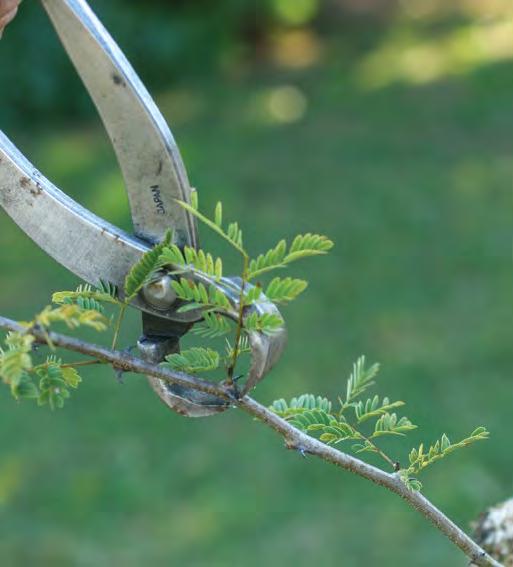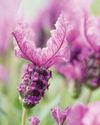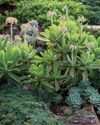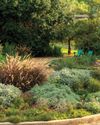
Bonsai artists are constantly coming up with new methods and techniques, not all of them are valid.
The two most trusted methods are ‘Clip and Grow’ and ‘wiring’. The two techniques produce slightly different results, and the truth is that most often they are used together, but it is good to understand the difference so that one can choose the best one for the occasion.
Pruning, or ‘Clip and Grow’, is simply the process of cutting the branch off where required. This sounds simple enough, but there are a few things to consider. If you look at a branch, you will see that it is divided into sections by lines or grooves. These lines are called nodes and are the zones from which new shoots and branches emerge. The spaces between the nodes are called the internodal spaces. It is the main task of the bonsai grower to reduce the length of the internodal spaces, because that means more nodes and consequently more shoots and leaves. The principal mechanism for doing this, is sunlight. The more sun a plant gets, the shorter the internodal spaces. If you look closely at the nodes, you will see a spot on the node that indicates exactly where the new shoot will emerge. Generally, the new shoot will emerge at a right angle from this point. So, by carefully selecting the position of a cut, you can influence what direction the emerging shoot will grow. This is the basic principle of ‘Clip and Grow’. Until the tip of the branch, also known as the terminal bud, is removed, the branch will continue to grow longer. Remove the tip and the branch will put out a fair number of new shoots from which the bonsai artist can choose.
Denne historien er fra June 2023 -utgaven av The Gardener.
Start din 7-dagers gratis prøveperiode på Magzter GOLD for å få tilgang til tusenvis av utvalgte premiumhistorier og 9000+ magasiner og aviser.
Allerede abonnent ? Logg på
Denne historien er fra June 2023 -utgaven av The Gardener.
Start din 7-dagers gratis prøveperiode på Magzter GOLD for å få tilgang til tusenvis av utvalgte premiumhistorier og 9000+ magasiner og aviser.
Allerede abonnent? Logg på

FIRE AND Feathers!
On a dreary winter's day, a screen of fiery and feathery leaves puts up a fight against dullness!

GET THE ladies in!
At this time of year, early-flowering shrubs vie with each other to get the most attention. We say: Trust those with female names for frills and butterflies. They go the extra mile to flower their hearts out.

Vegetable Soups and dumplings
Vegetables make the most delicious soups and classic combinations are always a winner.

Yummy sweet potatoes for your good health
Boiled, baked or braaied, sweet potatoes (Ipomoea batatas) are a delicious and healthy winter comfort food. Just a dollop of butter, a little seasoning and you are good to go.

Pretty and functional
If cooking is your main thing, you would probably be more interested in the culinary value of the three herbs and some of their varieties we are describing.

Dried Seedheads & Pods
Autumn and winter are the best times to see what flowers produce the best seedheads that can be left on the plants to feed the birds and bugs and for harvesting for dried arrangements.

SO MANY FACES and so many choices...
Whoever associated a Cotyledon orbiculata (pig's ear) with the ear of a pig obviously did not know about all the varieties and cultivars this species in the genus Cotyledon has.

COLOURFUL Cold Weather WINNERS!
If it comes to a vote, these dependable shrubs will be the top candidates for prime performance in winter and in other seasons...

What makes a garden sustainable?
It is interesting to note that the United Nations defines sustainable development as: “development that meets the needs of the present without compromising the ability of future generations to meet their own needs”.

Nurturing NATURE-The Story of Kraal Garden's Transformation
Nestled within Prince Albert's rustic embrace lies a gem that is a testament to the transformative power of human vision and nature's bounty.